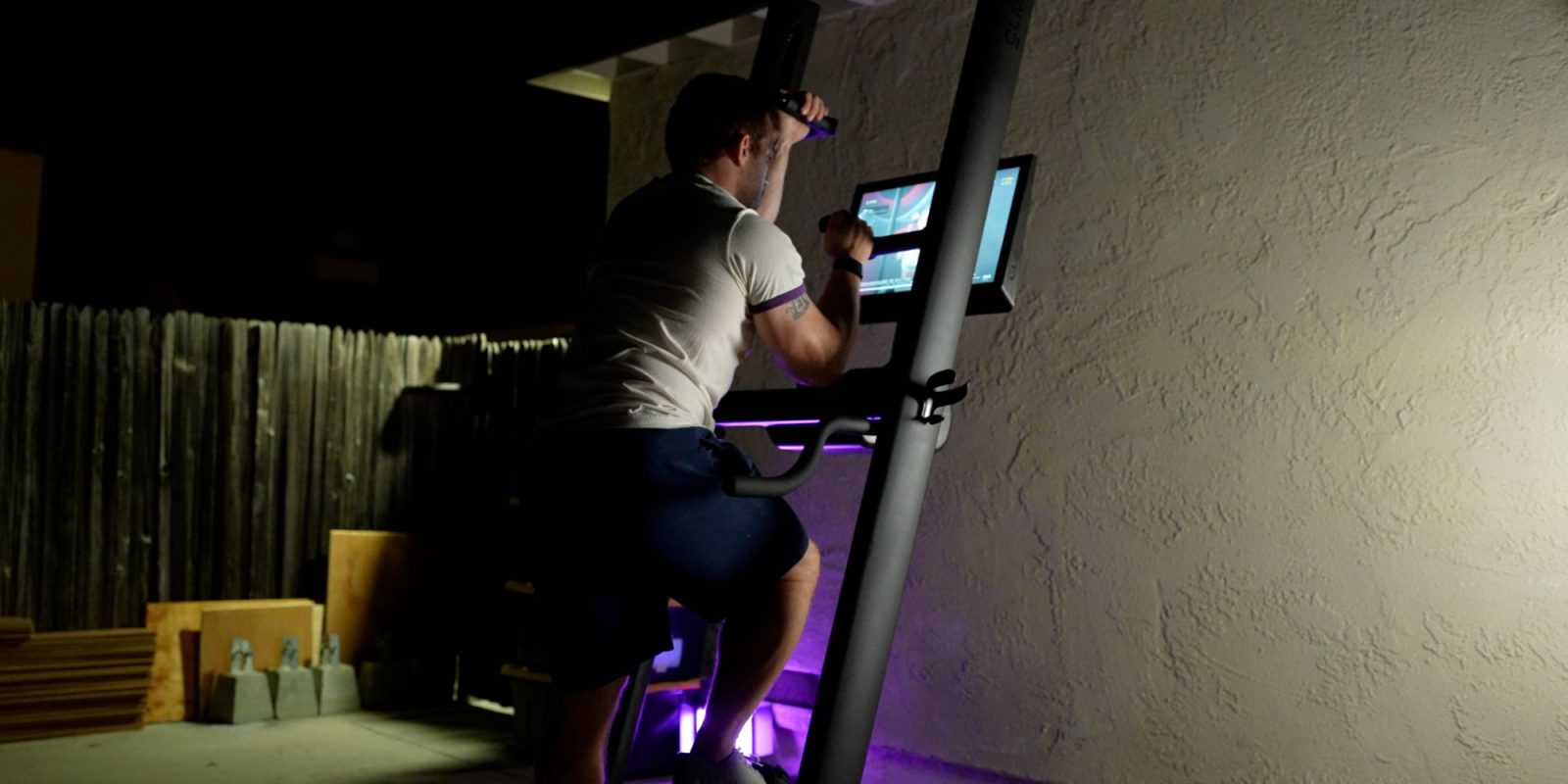
CLMBR is the first to create a connected fitness experience around a vertical climber. Not only that, but it is also the first company to make a climber look as good as it feels to use. With impressively little floor space needed, CLMBR packs an enormous amount of workout variety that is arguably more effective and functional than other options.
Table of contents
CLMBR video review
Subscribe to Connect The Watts for more connected fitness news, updates, tips, and guides
A quick overview of CLMBR
CLMBR is vertical climbing’s introduction to the connected fitness space. Built with what the company describes as “an open central design,” this machine is not a behemoth like the vertical climbers most people are familiar with. A CLMBR membership gets users access to hundreds of classes.
CLMBR specs
| Base Dimensions | 35 in x 32 in |
| Height | 88 inches |
| Weight | 180 lbs. |
| Materials | Cast + extruded aluminum |
| Drive Train | Magnetic resistance |
| Step Length | 20 inches |
| Reach Height | 20 inches |
| Resistance | 11 levels |
| User Height | 4’11” minimum, 7′ maximum |
| Max User Weight | 350 lbs. |
| Screen | 21.5” HD touchscreen |

Design
I’ve always loved using machines like the VersaClimber in my training. CLMBR took the vertical climber idea and improved on it significantly with the design.
For one, there is no center pole, which always felt awkward to stare at, and instead has a two pole design. This opens up the middle and makes for an unobstructed view of the 21.5” HD touchscreen. The screen is set back enough that it isn’t too close to your face.
Not only does this design look better, it feels better to use and it opens up additional options as well. The center surface space houses the resistance knob, but there is a lot of extra space here to place your phone.
Handles
The handles are designed to offer multiple grip positions. This allows for more diversity in the angles you use CLMBR, which, as I’ll discuss in a bit, really is one of the hidden benefits of this machine. The handles can be folded up, out of the way, when not being used. Similar to other climbers, there are also stationary bars to the side you can use as well.
The handles can also be adjusted for your personal height. Changing the height isn’t too difficult, but it is definitely not the best part of the design. Having to share the machine with my wife, I wish they had found a way to make this a little easier to do.
Screen
The screen itself looks nice, and I especially appreciate the extra large volume buttons on the side. You’re able to adjust the volume of the instructor and music seperately. The CLMBR screen can be adjusted further back or closer, and tilted up or down.
The screen goes to sleep when you press the button in the back, and turns off when that button is held. There were several times when the tablet would freeze up and have trouble working, and I finally figured out this would happen after I left the CLMBR in rest mode rather than a complete shut down.
The tablet did have some issues with the internet connection, often warning me the connection is poor, and a few times I had to pause the class to buffer. This isn’t a problem I’ve had with any other device, and my internet speed is plenty fast (200mb+) where I have the CLMBR located. I’m not exactly sure what the issue is.
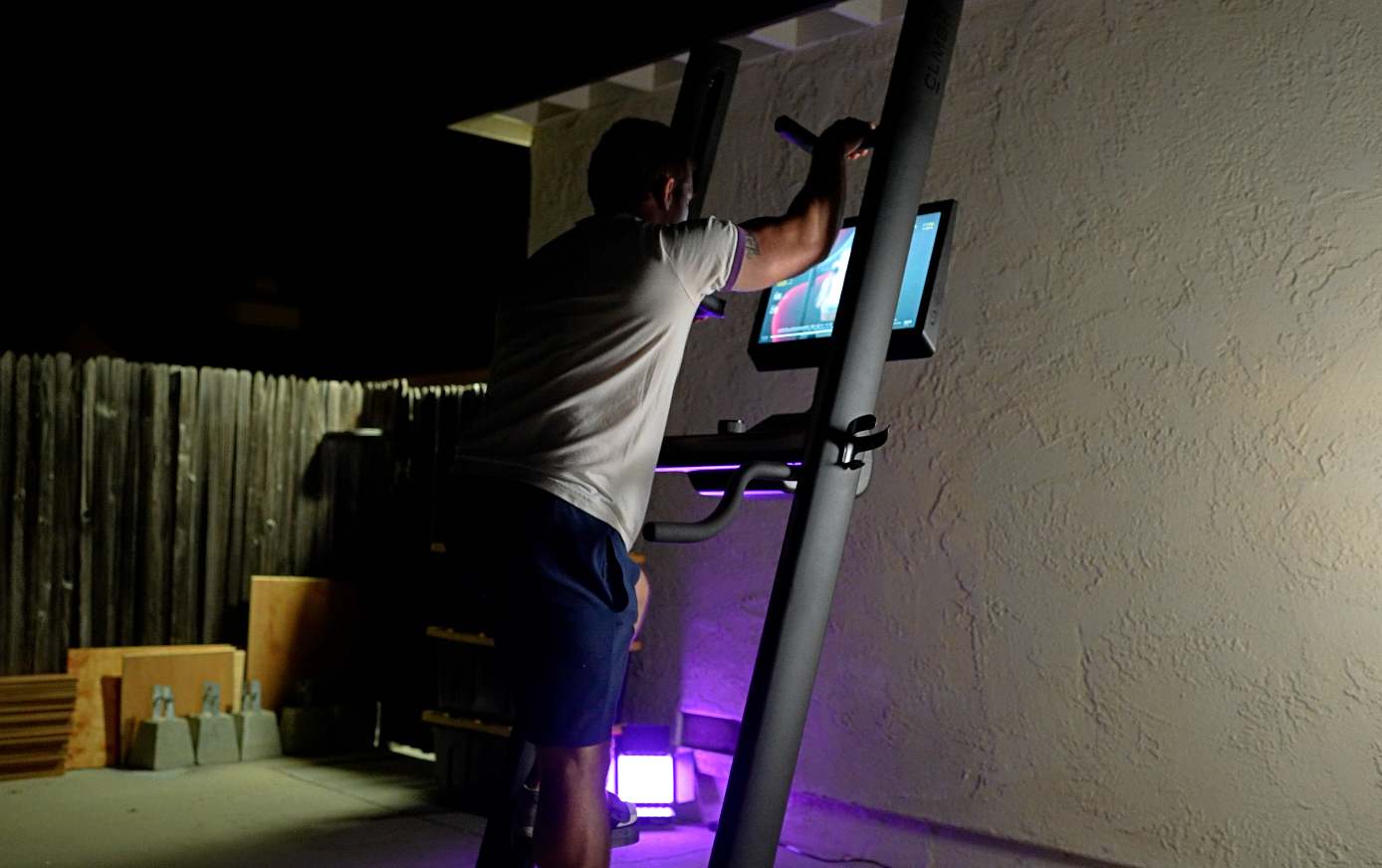
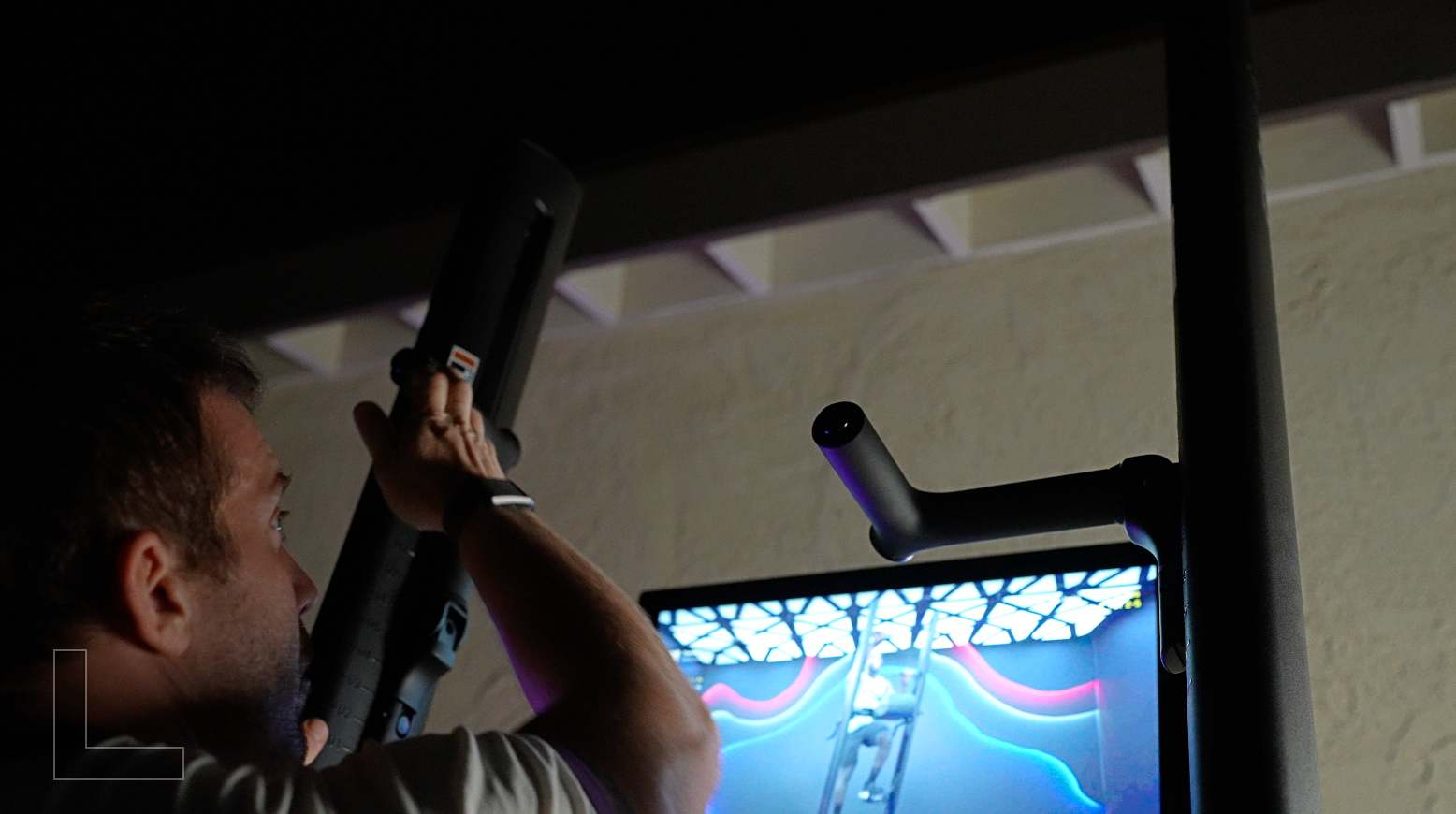
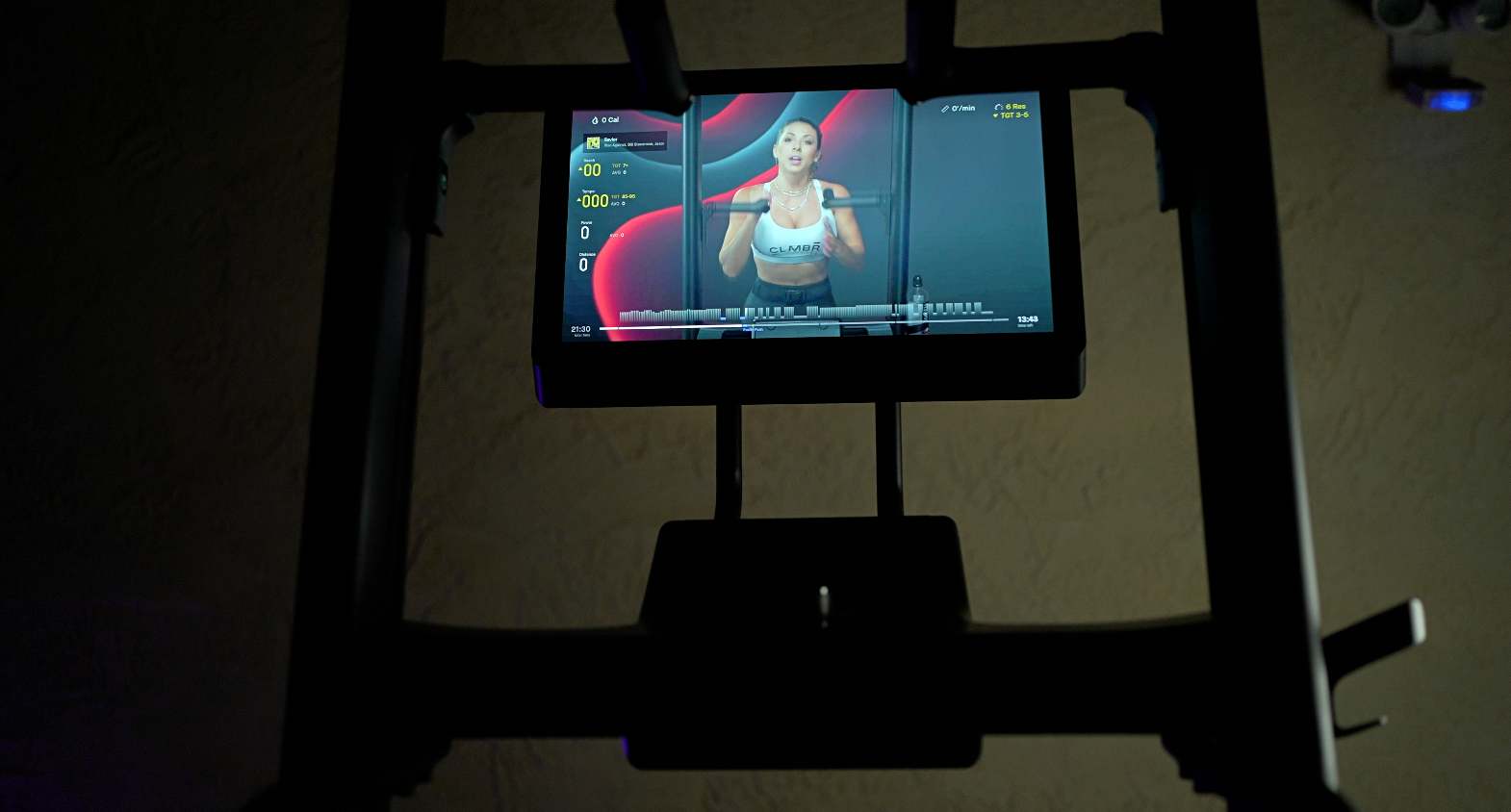
Resistance
Resistance can be adjusted from level one to 11. There is definitely a difference between the lowest and highest levels, but it isn’t really a lot of resistance.
Level one feels like no resistance… and level 11 feels like a little resistance.
The limited resistance range is not the end of the world, as I was still able to get great workouts with CLMBR. But having used climbers in the past that offered a lot more resistance, it feels unfortunate to not have that here.
The CLMBR website says superior cardio and strength, but with the minimal resistance, I don’t think the strength aspect is really going to be there for most users.
As I mentioned earlier, climbing is an arguably better workout for many people than running, biking, and, potentially, even rowing.
There are a few different reasons for that. One is because of how easy it is to maintain good form and posture. With biking and rowing, a lot of people tend to put a lot of compression into their lower backs with bad form.
Another reason it can be a superior workout is that it offers the most range of motion. Both legs and arms can go to full extension, which is pretty impressive considering the fact there is little to no impact.
In fact, when I sprained my foot about six weeks ago, I was working out on the CLMBR the next day. And that was at a point I couldn’t even walk, to give an idea of just how low impact this is.

Membership
Like most connected fitness devices, almost everything on CLMBR is locked behind a $39 monthly membership. Without the membership, a user will have access to only a basic “Just Climb” mode.
Classes
CLMBR has quality coaches and well done classes, offering a surprising amount of variety.
Prior to CLMBR, I never realized how many variations of tempo, arm positions, body positions, and lengths could be combined to make effective vertical climber workouts. Most classes are coordinated around a specific playlist, so in addition to effective, the classes feel fun and enjoyable.
The bootcamp classes mix climbing with bodyweight and/or dumbbell work. These can be brutal, but the challenging combinations add even more value to the membership.
On the app, you can search through workouts, but unfortunately you can only take classes on the CLMBR itself. This is a major shortcoming, considering there are strength and mobility classes that could make sense to take away from the machine.
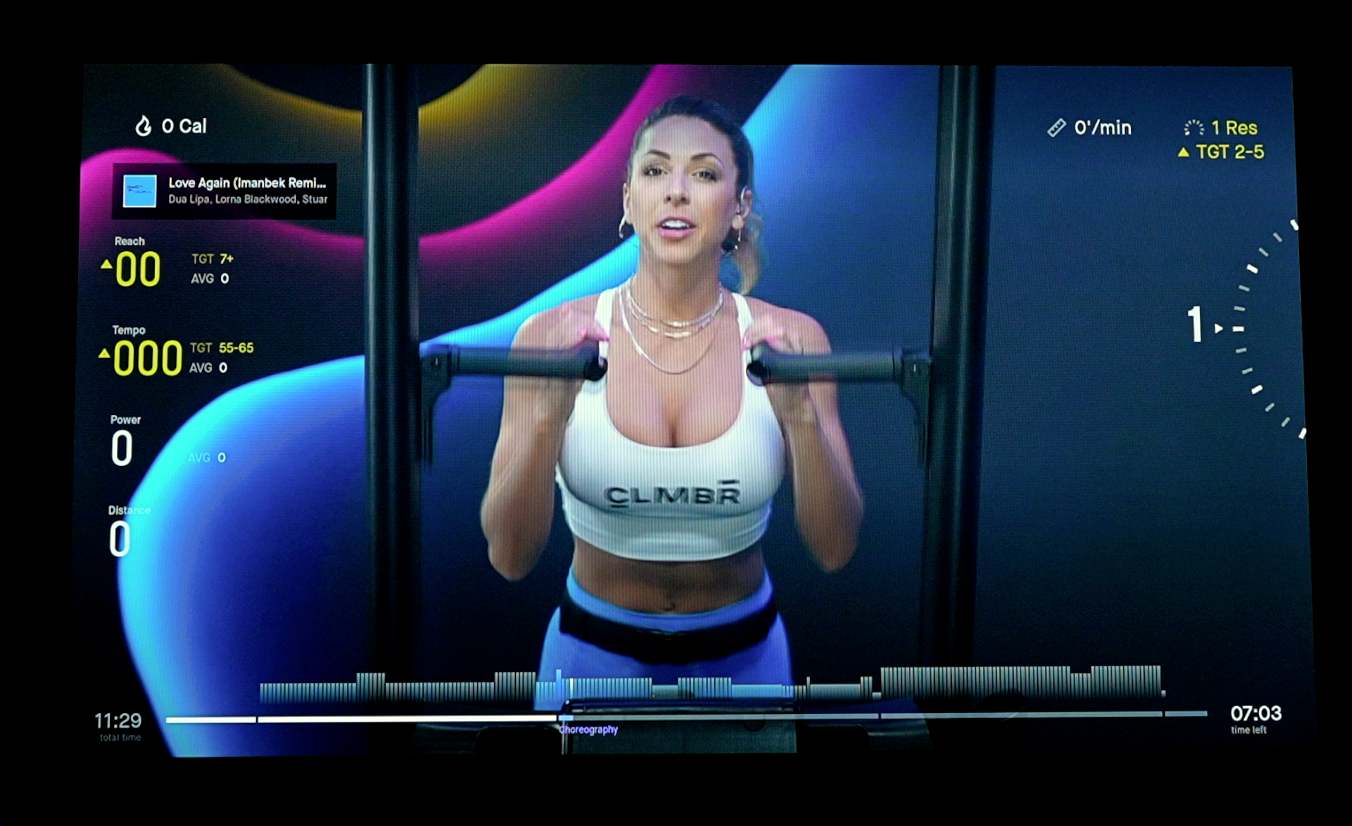
Benchmarks and Challenges
Other modes, like Benchmarks and Challenges, feel a little half-baked. Benchmark mode has you retest every 60 days to gauge improvement. Challenge mode has leaderboards where you can gauge your performance against other users.
There are monthly challenges and a badge reward system. I found this area cluttered and hards to navigate. The entire platform sort of feels that way, including the UI and metrics.
Tracking and metrics
The CLMBR UI could use a makeover, a little more love put into its presentation. None of the content is bad, but compared to other platforms’ charging similar amounts for membership, CLMBR falls behind quite a bit.
You can pair a heart rate monitor to CLMBR, but the workout tracking and stats are pretty limited, so I see almost no point in pairing a monitor. There’s also no way to export your workouts to third party apps, like Strava.
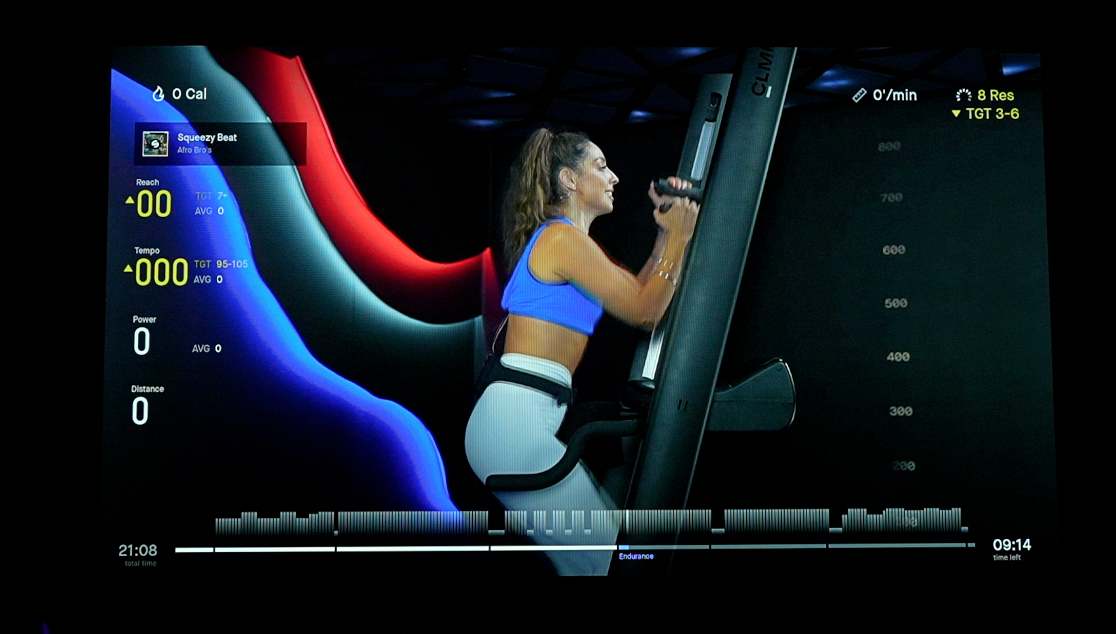
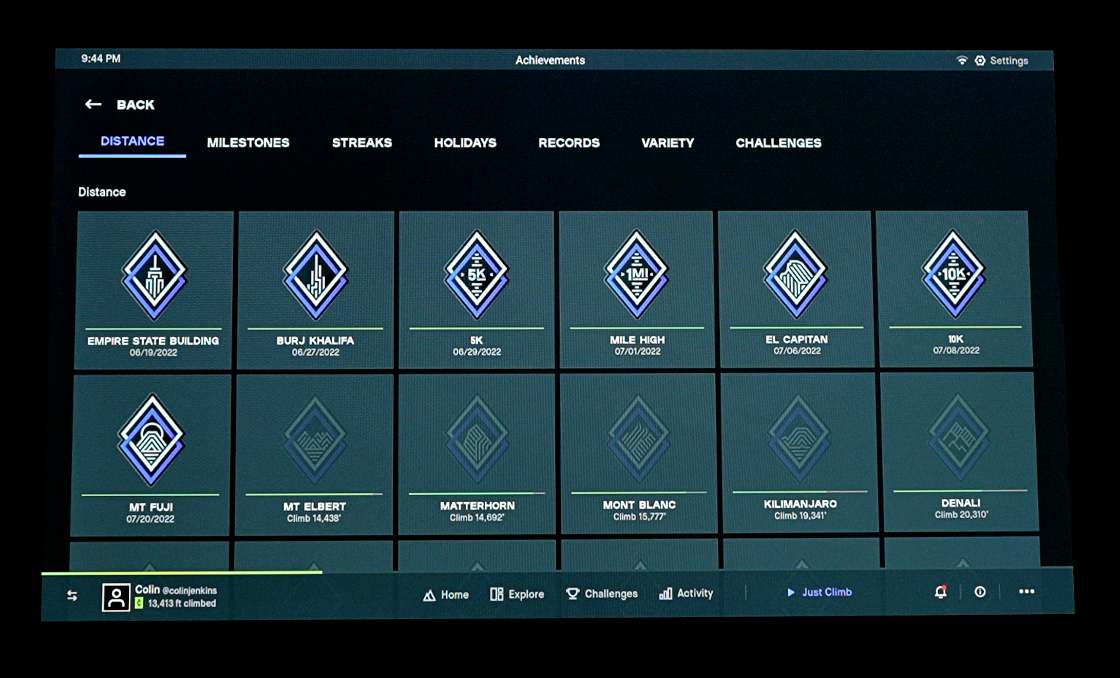
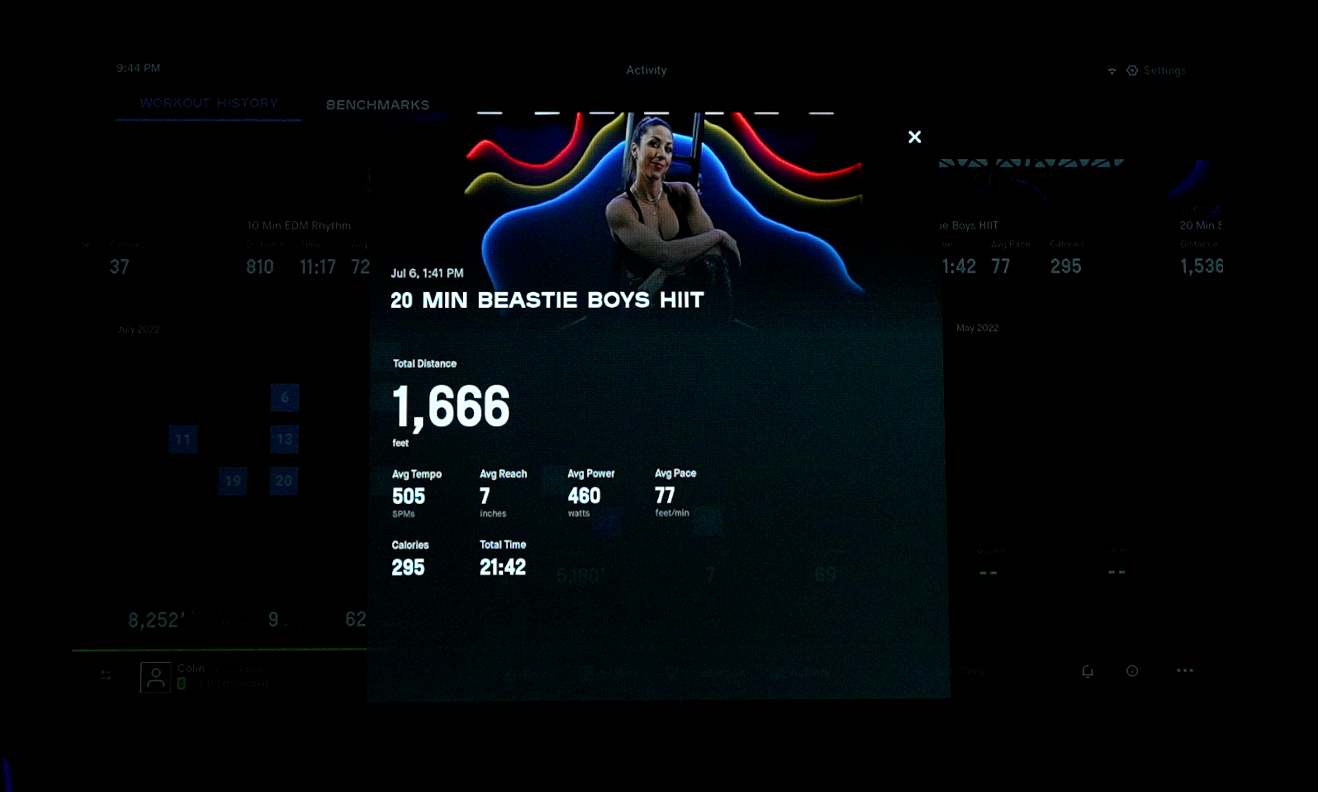
Cost of CLMBR
And that brings me to my number one issue with CLMBR – the price. Because I like the machine and love the design, I think the membership is pretty solid, but the cost when everything’s considered, doesn’t feel quite in line with what is being offered.
I understand the original $2,799 price because that is within the range of vertical climbing machines, like VeraClimber. But when you compare the quality of CLMBR to other equipment, like bikes or rowers, it feels a bit much.
Lately, I have seen CLMBR price drop to $1,799, which feels much more in line with what you’re getting.
Final thoughts
CLMBR: great design, unique and effective workouts, fun to use, but pricey. Machine price tag aside, the monthly membership cost needs to offer a bit more to make it really worth it.
The $39 per month membership, which I know is common for many connected fitness platforms, just doesn’t offer enough to justify that cost. CLMBR could use more strength, mobility, built out programs, live classes, leaderboards… what you see on other platforms.
BUT it’s hard to overstate just how nice the CLMBR looks. It’s a beautiful looking piece of fitness equipment that almost anyone would be happy to see in their home gym.
Suggested articles:
- Jay-Z and Novak Djokovic invest in CLMBR
- New Hydrow Wave Rower releases at $1,000 less than the original
- The best home boxing workouts: from Peloton to FightCamp
FTC: We use income earning auto affiliate links. More.


